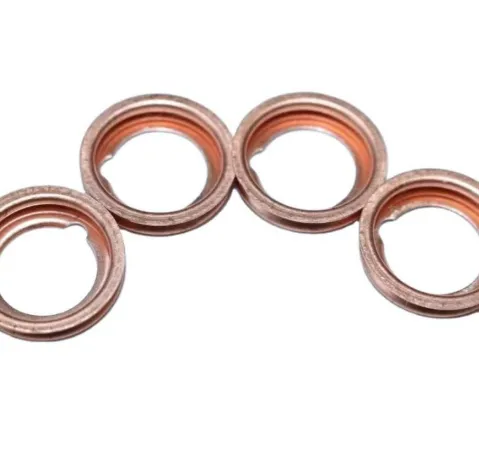Plastic Oil Drain Plugs: Lightweight Solutions for Modern Engines
In automotive and machinery maintenance, the oil drain plug is a critical component used to seal the oil pan and allow for controlled draining of engine oil. Traditionally made from metal, a growing number of vehicles and equipment now use a plastic oil drain plug due to its many advantages including weight reduction, corrosion resistance, and cost-effectiveness.

The terms plastic oil drain plug, plastic drain plug, drain plug plastic, plastic oil drain, and plastic oil plug all refer to similar components designed primarily from durable polymers rather than metal. These plugs have become increasingly common in passenger cars, motorcycles, lawn equipment, and other machines where reducing weight and corrosion risks are priorities.
Benefits and Applications of Plastic Oil Drain Plugs
Plastic oil drain plugs offer several distinct advantages compared to their metal counterparts:
Corrosion Resistance: Unlike metal plugs, plastic won’t rust or corrode, making them ideal for vehicles operating in wet or salty environments. This prevents seizing and damage to the oil pan threads.
Lightweight: The reduced weight of plastic drain plugs contributes to overall vehicle efficiency, especially important in motorcycles and high-performance vehicles.
Cost-Effective: Plastic components are often cheaper to manufacture, which can lower maintenance costs for consumers.
Chemical Resistance: Plastics used in oil drain plugs are resistant to engine oil, additives, and other chemicals, ensuring durability over time.
Despite these benefits, plastic oil drain plugs must be handled carefully during installation to avoid cracking or over-tightening. They usually incorporate features such as built-in washers or sealing gaskets to maintain a tight seal.
Common applications include:
Passenger vehicles, especially newer models aiming for weight savings
Motorcycles and scooters, where space and weight are at a premium
Small engines, including lawnmowers and generators
Marine equipment, where corrosion is a major concern
Installation and Maintenance Tips for Plastic Oil Drain Plugs
Using a plastic oil drain plug requires some adjustments to typical oil change routines. Here are essential tips for successful maintenance:
Proper Torque Application
Plastic drain plugs can crack or strip if over-tightened. Always consult the vehicle’s service manual for recommended torque settings and use a torque wrench if possible. Unlike metal plugs, the torque specs for plastic oil plugs tend to be significantly lower.
Inspect for Wear and Damage
Because plastics are less forgiving than metal, inspect the plug carefully at each oil change. Look for:
Cracks or stress marks
Deformed sealing surfaces
Damaged threads
Replace any plastic oil drain plug showing signs of wear immediately to avoid leaks or damage to the oil pan.
Washer or Seal Replacement
Many plastic oil drain plugs include integrated sealing washers or gaskets. Always replace these seals during oil changes to maintain leak-free performance.
Plastic plugs are an excellent choice for many modern applications but may not be suitable for high-performance or commercial vehicles requiring extra ruggedness.
The plastic oil drain plug offers a practical, corrosion-resistant, and cost-effective option for sealing your engine oil pan. Whether you call it a plastic drain plug, drain plug plastic, plastic oil drain, or simply a plastic oil plug, this component is gaining traction in modern vehicles and equipment due to its lightweight design and resistance to environmental damage.
When changing oil, always remember to use the correct torque and replace any washers or seals to maintain a secure, leak-free fit. With proper care, plastic oil drain plugs provide reliable service while helping reduce overall vehicle weight and maintenance headaches.
-
Mastering Diesel and Performance Engine Maintenance: A Guide to Critical Oil Gaskets
Habari Jul.28,2025
-
How to Identify and Fix Oil Filter Mount and Housing Gasket Leaks
Habari Jul.28,2025
-
Fixing Oil Housing Gasket Leaks: A Guide to Replacing Your Oil Filter Housing and Gaskets
Habari Jul.28,2025
-
Everything You Need to Know About Changing Your Oil Filter Housing Gasket and Related Gaskets
Habari Jul.28,2025
-
Essential Kits and Tools for Engine Repair and Enhancement
Habari Jul.28,2025
-
Diagnosing and Fixing a Leaking Oil Filter Housing Gasket: What You Need to Know
Habari Jul.28,2025
-
Understanding Flat Gaskets: Types, Materials, and Industrial Applications
Habari Jul.25,2025
Kategoria za bidhaa















